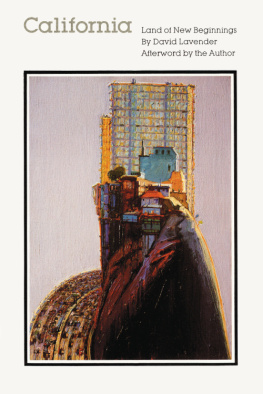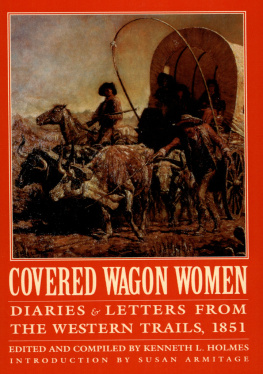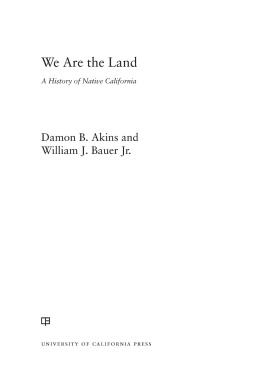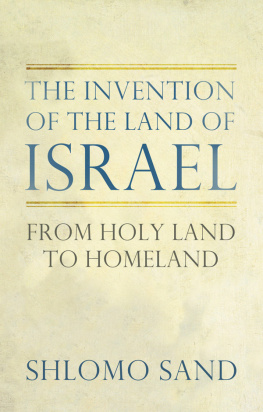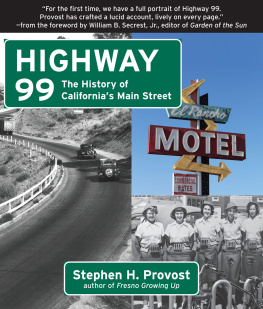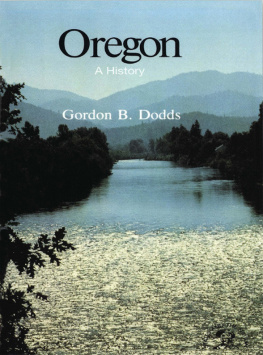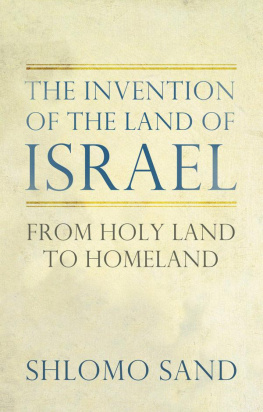THE STATES AND THE NATION SERIES, of which this volume is a part, is designed to assist the American people in a serious look at the ideals they have espoused and the experiences they have undergone in the history of the nation. The content of every volume represents the scholarship, experience, and opinions of its author. The costs of writing and editing were met mainly by grants from the National Endowment for the Humanities, a federal agency. The project was administered by the American Association for State and Local History, a nonprofit learned society, working with an Editorial Board of distinguished editors, authors, and historians, whose names are listed below.

EDITORIAL ADVISORY BOARD
James Morton Smith, General Editor
Director, State Historical Society
of Wisconsin
William T. Alderson, Director
American Association for
State and Local History
Roscoe C. Born
Vice-Editor
The National Observer
Vernon Carstensen
Professor of History
University of Washington
Michael Kammen, Professor of
American History and Culture
Cornell University
Louis L. Tucker
President (19721974)
American Association for
State and Local History
Joan Paterson Kerr
Consulting Editor
American Heritage
Richard M. Ketchum
Editor and Author
Dorset, Vermont
A. Russell Mortensen
Assistant Director
National Park Service
Lawrence W. Towner
Director and Librarian
The Newberry Library
Richmond D. Williams
President (19741976)
American Association for
State and Local History
MANAGING EDITOR
Gerald George
American Association for
State and Local History

To the memory of Weyers, Careys, Creighs
rugged Nebraska homesteaders of yesterday
and to their descendants
Frank and Mabelle Carey Weyer
and especially
Tom
Mary Elizabeth, Tommy
Johnny and Jaimie Creigh


IN 1807, former President John Adams argued that a complete history of the American Revolution could not be written until the history of change in each state was known, because the principles of the Revolution were as various as the states that went through it. Two hundred years after the Declaration of Independence, the American nation has spread over a continent and beyond. The states have grown in number from thirteen to fifty. And democratic principles have been interpreted differently in every one of them.
We therefore invite you to consider that the history of your state may have more to do with the bicentennial review of the American Revolution than does the story of Bunker Hill or Valley Forge. The Revolution has continued as Americans extended liberty and democracy over a vast territory. John Adams was right: the states are part of that story, and the story is incomplete without an account of their diversity.
The Declaration of Independence stressed life, liberty, and the pursuit of happiness; accordingly, it shattered the notion of holding new territories in the subordinate status of colonies. The Northwest Ordinance of 1787 set forth a procedure for new states to enter the Union on an equal footing with the old. The Federal Constitution shortly confirmed this novel means of building a nation out of equal states. The step-by-step process through which territories have achieved self-government and national representation is among the most important of the Founding Fathers legacies.
The method of state-making reconciled the ancient conflict between liberty and empire, resulting in what Thomas Jefferson called an empire for liberty. The system has worked and remains unaltered, despite enormous changes that have taken place in the nation. The countrys extent and variety now surpass anything the patriots of 76 could likely have imagined. The United States has changed from an agrarian republic into a highly industrial and urban democracy, from a fledgling nation into a major world power. As Oliver Wendell Holmes remarked in 1920, the creators of the nation could not have seen completely how it and its constitution and its states would develop. Any meaningful review in the bicentennial era must consider what the country has become, as well as what it was.
The new nation of equal states took as its motto E Pluribus Unumout of many, one. But just as many peoples have become Americans without complete loss of ethnic and cultural identities, so have the states retained differences of character. Some have been superficial, expressed in stereotyped imagesbig, boastful Texas, sophisticated New York, hillbilly Arkansas. Other differences have been more real, sometimes instructively, sometimes amusingly; democracy has embraced Huey Longs Louisiana, bilingual New Mexico, unicameral Nebraska, and a Texas that once taxed fortunetellers and spawned politicians called Woodpecker Republicans and Skunk Democrats. Some differences have been profound, as when South Carolina secessionists led other states out of the Union in opposition to abolitionists in Massachusetts and Ohio. The result was a bitter Civil War.
The Revolutions first shots may have sounded in Lexington and Concord; but fights over what democracy should mean and who should have independence have erupted from Pennsylvanias Gettysburg to the Bleeding Kansas of John Brown, from the Alamo in Texas to the Indian battles at Montanas Little Bighorn. Utah Mormons have known the strain of isolation; Hawaiians at Pearl Harbor, the terror of attack; Georgians during Shermans march, the sadness of defeat and devastation. Each states experience differs instructively; each adds understanding to the whole.
The purpose of this series of books is to make that kind of understanding accessible, in a way that will last in value far beyond the bicentennial fireworks. The series offers a volume on every state, plus the District of Columbiafifty-one, in all. Each book contains, besides the text, a view of the state through eyes other than the authorsa photographers essay, in which a skilled photographer presents his own personal perceptions of the states contemporary flavor.
We have asked authors not for comprehensive chronicles, nor for research monographs or new data for scholars. Bibliographies and footnotes are minimal. We have asked each author for a summing upinterpretive, sensitive, thoughtful, individual, even personalof what seems significant about his or her states history. What distinguishes it? What has mattered about it, to its own people and to the rest of the nation? What has it come to now?
To interpret the states in all their variety, we have sought a variety of backgrounds in authors themselves and have encouraged variety in the approaches they take. They have in common only these things: historical knowledge, writing skill, and strong personal feelings about a particular state. Each has wide latitude for the use of the short space. And if each succeeds, it will be by offering you, in your capacity as a citizen of a state and of a nation, stimulating insights to test against your own.
James Morton Smith
Next page


